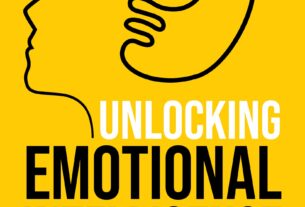As the world becomes increasingly digitized, cybercriminals are finding new ways to exploit the vulnerabilities in online systems. One such technique that has gained notoriety in recent years is carding. Carding involves using stolen credit card information to make unauthorized purchases or withdraw funds from a victim’s account. To facilitate this criminal activity, cybercriminals use a range of specialized tools known as carding tools. In this article, we will dive into the world of carding tools and explore their dark side.
What Are Carding Tools?
Carding tools are software programs or scripts designed to aid cybercriminals in stealing and using stolen credit card information for fraudulent purposes. These tools can be used by anyone with basic knowledge of computers, making it easy for even inexperienced criminals to engage in illegal activities. Some common types of carding tools include:
1. Card Validators: These tools are used to check whether a credit card number is valid or not. They work by running a series of checks on the card details, such as the issuer identification number (IIN), expiration date, and security code.
2. Credit Card Generators: These tools create fake credit card numbers that can be used for fraud. They typically generate random combinations of digits that mimic valid credit card numbers.
3. Card Skimmers: These physical devices are installed on ATMs or point-of-sale terminals and are used to steal credit card information when the victim swipes their card.
4. Dumps and CVV Shops: These online marketplaces sell stolen credit card data, including dumps (the magnetic strip information) and CVVs (the three-digit security code).
The Risks Associated with Carding Tools
Carding tools have become a major threat to online security, posing risks to both individuals and businesses alike. Some of the risks associated with these tools include:
1. Identity Theft: Carding tools can be used to steal personal information, such as social security numbers and passwords, which can be used for identity theft.
2. Financial Loss: Using stolen credit card information can result in significant financial loss for victims, who may have to pay for fraudulent charges made on their cards.
3. Legal Consequences: Engaging in carding activities is illegal and can result in severe penalties, including fines and imprisonment.
4. Reputation Damage: Businesses that fall victim to carding attacks may suffer reputational damage, leading to loss of customer trust and revenue.
How Cybercriminals Use Carding Tools
Cybercriminals use carding tools in a variety of ways to carry out their illegal activities. Some common methods include:
1. Online Purchases: Cybercriminals use stolen credit card information to make unauthorized purchases online. They often use proxy servers or virtual private networks (VPNs) to mask their location and avoid detection.
2. Cash Withdrawals: Criminals can also use stolen debit card information to withdraw cash from ATMs or make purchases at retail stores.
3. Money Laundering: Carding tools can also be used for money laundering activities, where the criminal uses a series of transactions to disguise the source of illegally obtained funds.
4. Reselling Stolen Data: Cybercriminals can sell the stolen credit card data on online marketplaces, making a profit from their illegal activities.
Protecting Yourself Against Carding Attacks
To protect yourself against carding attacks, it’s essential to follow best practices for online security. Here are some tips you can follow:
1. Use Strong Passwords: Choose complex passwords that are difficult to guess and change them regularly.
2. Enable Two-Factor Authentication (2FA): 2FA adds an extra layer of security by requiring a second form of verification before allowing access to an account.
3. Monitor Your Accounts: Regularly check your bank and credit card statements for any unauthorized charges.
4. Use Secure Payment Methods: When making online purchases, use secure payment methods such as PayPal or credit cards with fraud protection.
5. Keep Your Software Up to Date: Ensure that your operating system and software applications are up to date with the latest security patches.
Conclusion
Carding tools have become a significant threat to online security, with cybercriminals using them to carry out illegal activities such as identity theft, financial fraud, and money laundering. As individuals and businesses continue to rely on digital systems for their daily activities, it’s essential to take steps to protect ourselves against these threats. By following best practices for online security and staying informed about the latest threats and vulnerabilities, we can help prevent falling victim to carding attacks.
References:
1. https://www.pcmag.com/news/the-dark-web-a-primer-for-cybersecurity-professionals
2. https://us.norton.com/internetsecurity-emerging-threats-what-is-carding.html
3. https://www.darkreading.com/vulnerabilities—threats/what-is-carding/a/d-id/1339793
4. https://www.bankinfosecurity.com/understanding-carding-tools-a-14147




